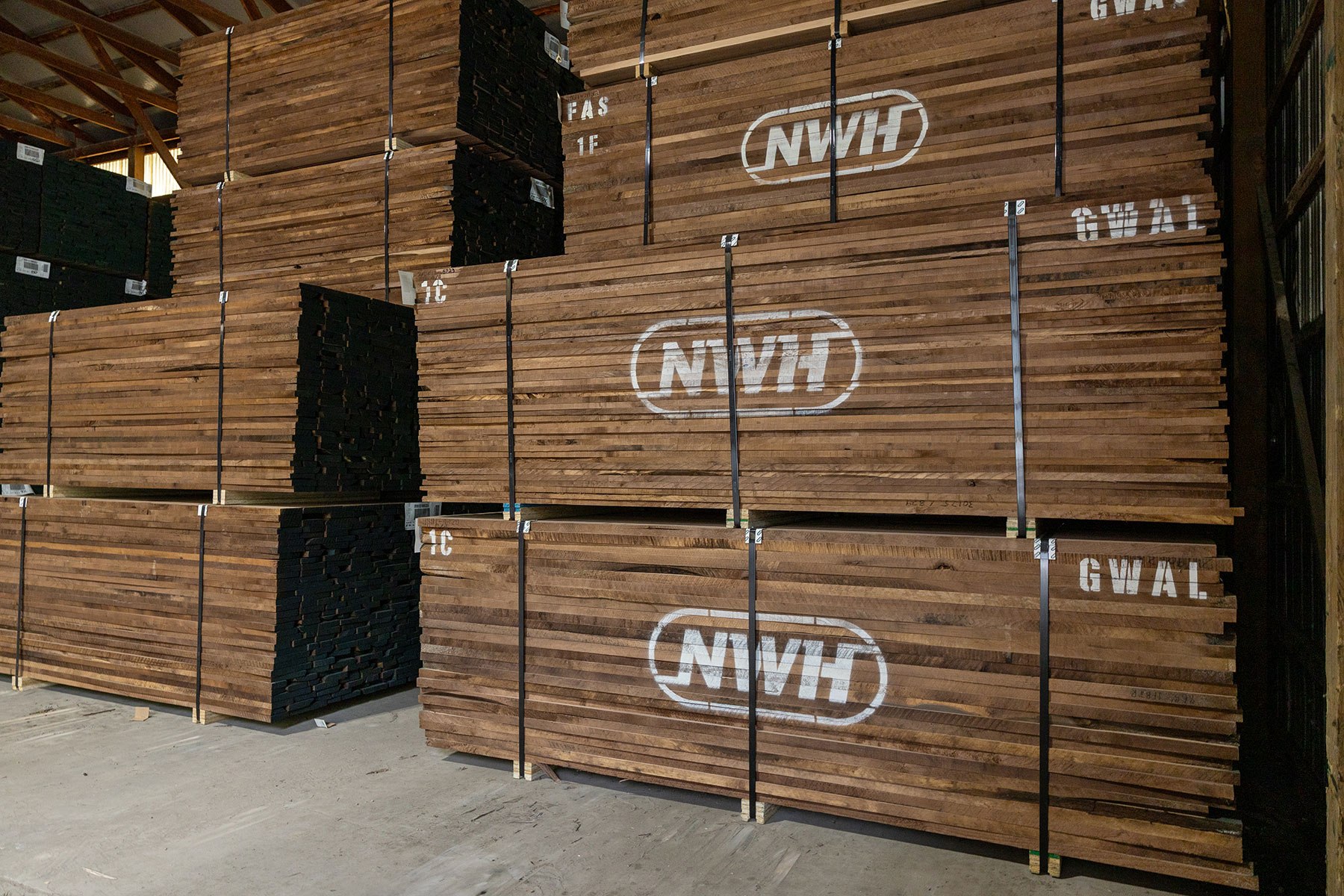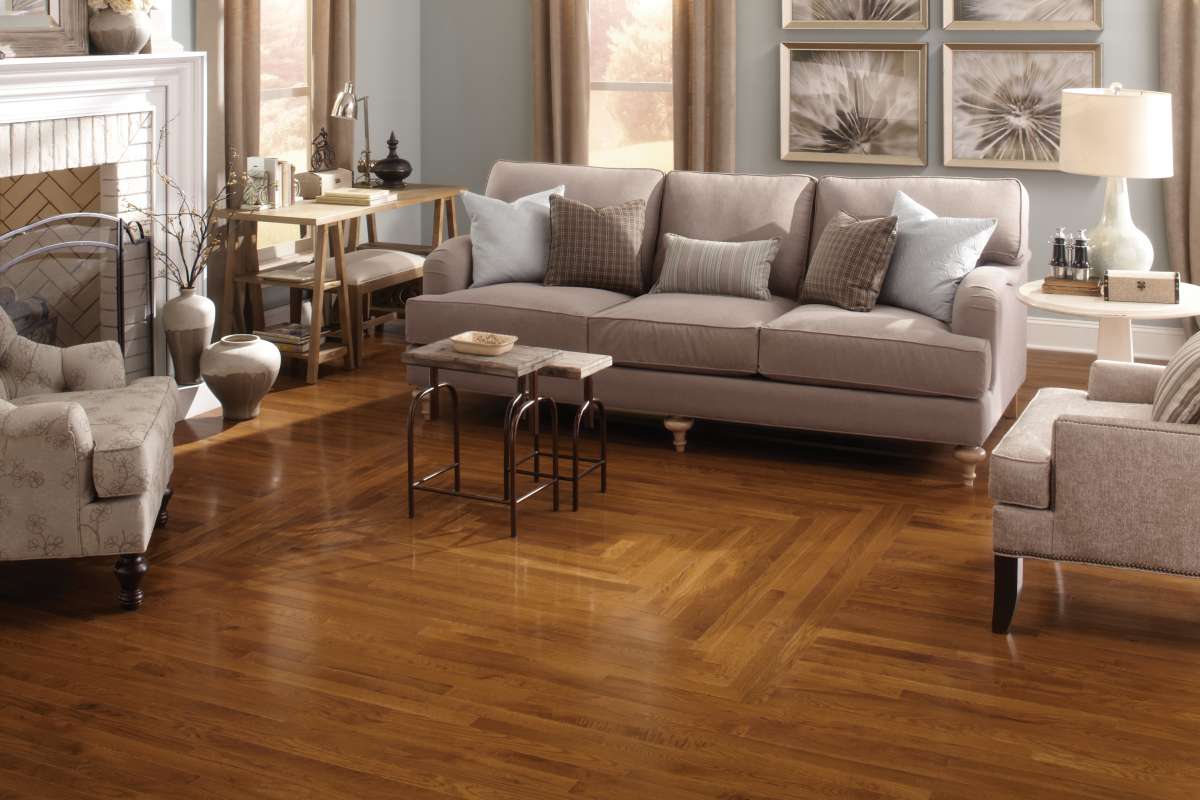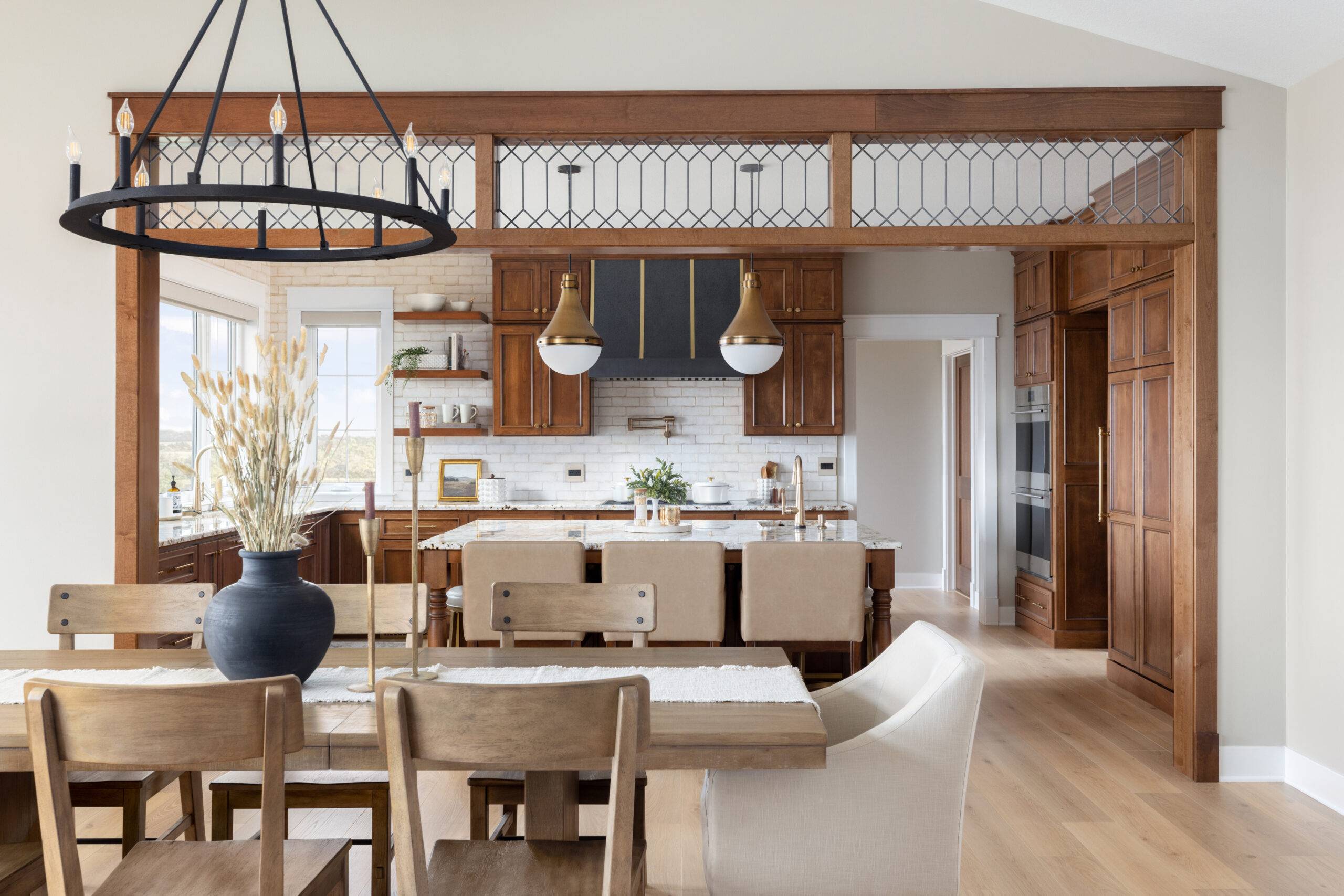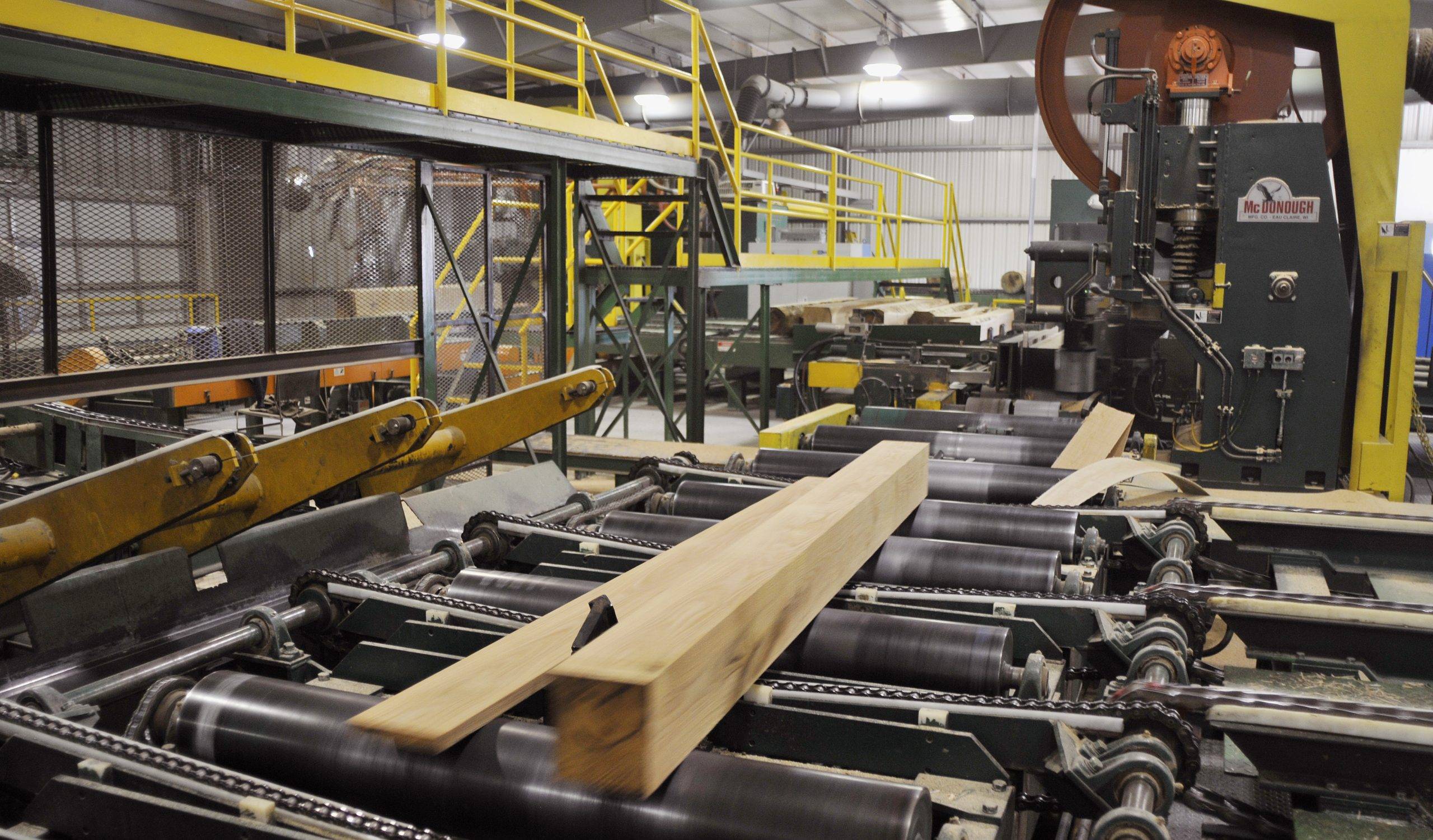Which feels better? And which is best for lowering your blood pressure under a deadline? That’s the question researchers posed in “Effects of Biophilic Indoor Environment on Stress and Anxiety Recovery,” a study published by Science Direct in 2020. It found that interiors that drew from nature—its materials, colors and textures—had a positive impact on participants’ physical and mental health.
It’s no wonder then that the word bio (ancient Greek for “life”) is popping up everywhere in the world of architecture and interiors. Biophilia, biomimicry, biodesign—these concepts point to a growing appreciation of the connection between life and the spaces we live life in.

Seems like a no-brainer decision. But for decades our interiors have grown increasingly disconnected from nature, using synthetic or cheap materials whose blandness and sterility subliminally sapped vitality from everyone spending time in them. This is changing as health, wellness and sustainability become a priority in the world of construction and design. One material that has proven its value on all three of those fronts is hardwood.
The texture, patterns, and colors of wood—and their innate associations with forests and the great outdoors—make hardwood a high-impact aesthetic choice for interiors. But it’s not only the well-being of those enjoying their designs; forestry and logging, industries responsible for cultivating and making the use of this material possible, report some of the highest levels of work satisfaction.
Altogether, these elements make hardwood a material choice with positive wellness ripple effects for everyone, from the forest workers managing it, to the mills and cabinet shops working it, to the people living, working and playing in environments built with it.

Bringing the Outside Inside: Hardwood’s Biophilic Properties
Biophilia – “fondness for living things” – describes our conscious and unconscious yearning for bringing the outdoors in. It’s based on the evolutionary connection humans have always had with nature, and our drive to live in harmony with it.
Biophilia is a rising influence in interior architecture and design as more attention is paid post-pandemic to physical and psychological well-being and health in our homes, office spaces, hospitals and beyond. But its principles are rooted in the historic; the authors of “Biophilic Design: The Theory, Science and Practice of Bringing Buildings to Life”2 argue that prior to mass industrialization, biophilia had always been an innate part of construction for human beings. There was greater interconnectedness built into structures, and wood craftsmanship was prized.
One example: patterns created by or seen in nature create a positive response in the human brain. It might be one reason our eyes can so readily tell the difference between the patterns in wood imitations and the organic character and grain movement of genuine hardwood. We have dozens of descriptors for this – grain, figure, burl, cathedrals, medullary rays, and so on – evidence of how much the tiniest details in hardwoods have captured our attention.

Alder hardwood is one example—its uniform honey color and close grain make it a prime material for “biophilic responses,” the healthy effects of human interaction with nature-inspired designs and organic materials. Studies cite improvements in cognitive performance, lighter moods and better health when measuring the positive impacts of environments with biophilic designs.
Further research bears this out: a University of British Columbia study measured wood’s effect on stress levels in the office. Researchers discovered that like time in nature, wood provides stress reduction. It’s what inventors of the 1990s Japanese phenomenon of “forest bathing,” consciously visiting parks and other natural settings, understood innately: spending time among trees is innately healing to our psyches.
These benefits reinforce the significant benefits to our health to be gained from using wood as a cornerstone of biophilic design, whether in homes, hospitals, schools or other built environments.
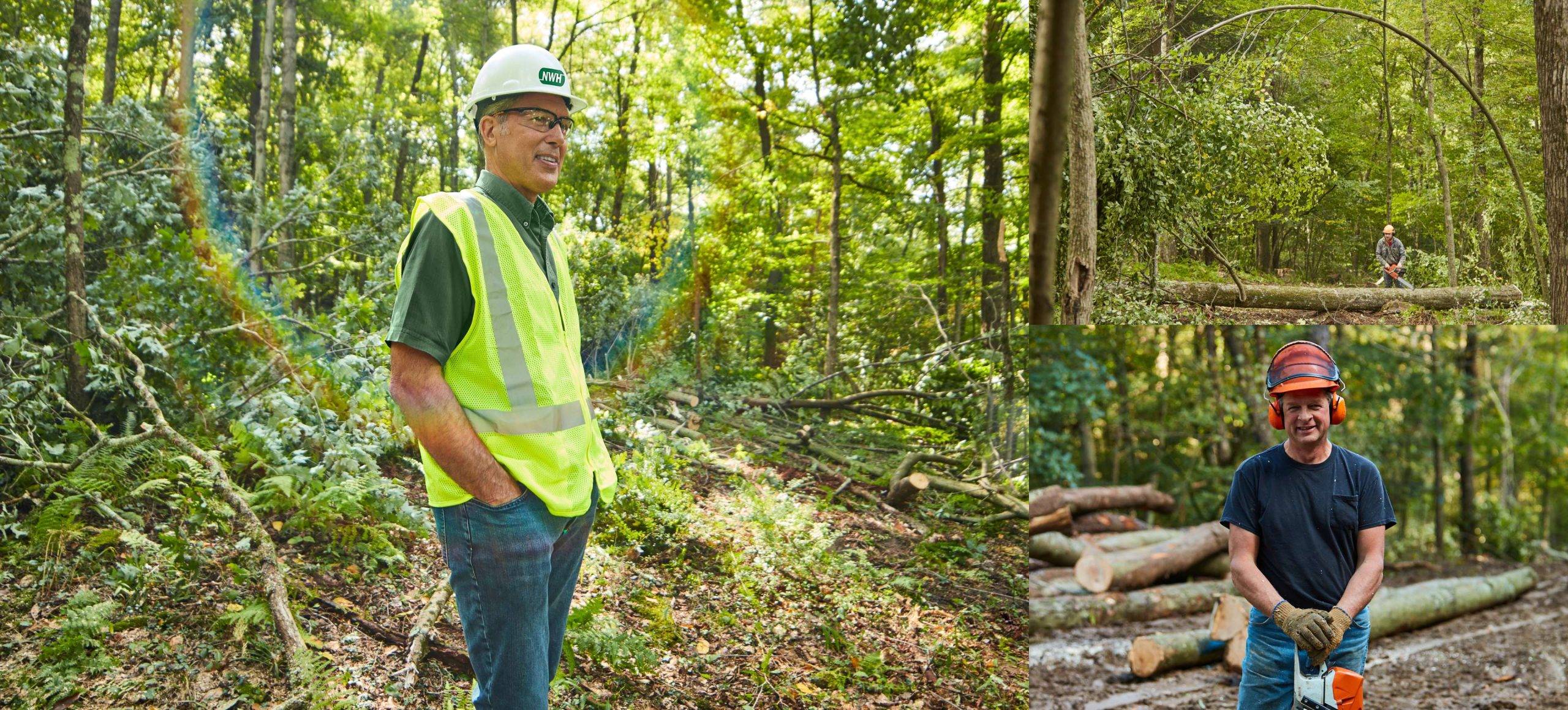
A Healthy Origin Story: The Lumberjack Effect
Consumers are increasingly aware of material origin stories – not only their impacts on our interiors but also the health and well-being of the people sourcing it and turning it into the products we use.
In an analysis by the Washington Post, lumberjacks and foresters stood out as the workers with the highest job satisfaction and happiness. Part of that was their “office,” in this case the forest; the great outdoors ranks only behind places of worship as places humans report feeling their most content.
The Post interviewed lumberjacks to better understand why such a seemingly daunting and physical job was so fulfilling. Here’s one perspective from Dana Chandler, co-owner of Family Tree Forestry in South Carolina:
“Even on your worst day—something has broken down and you need to get wood to the mill—the wind will blow, and you’ll inhale a familiar scent—that pine sap—and it’ll just take you to a place of peace instantly. It’s therapy. The woods is therapy, the forest is therapy. You can have the worst day ever but when you get out here? The forest just takes it all away.”
Chris Guth, Glacial Northern App Procurement Manager at NWH, adds, “There is something very therapeutic about working outdoors – whether it is taking a deep breath and the smell of the leaves as they turn colors in the fall; or standing in the bitter cold as the snow gently falls around you in the winter; or seeing the forest around you come back to life in the spring, or finding that perfect sunny spot in the middle of the deep shade of the forest on a perfect sunny summer day.” He continues, “It is all just very therapeutic and calming, and as foresters we get to experience these things everyday and we call it work.”
It’s a full-circle effect: cultivating, harvesting, and working with wood enhances well-being as much as, if not more than, using it throughout our indoor environments. Lumberjacks and forestry workers, as well as woodworkers and carpenters, not only take pride in their craftsmanship and honest labor but also enjoy enhanced mental health.
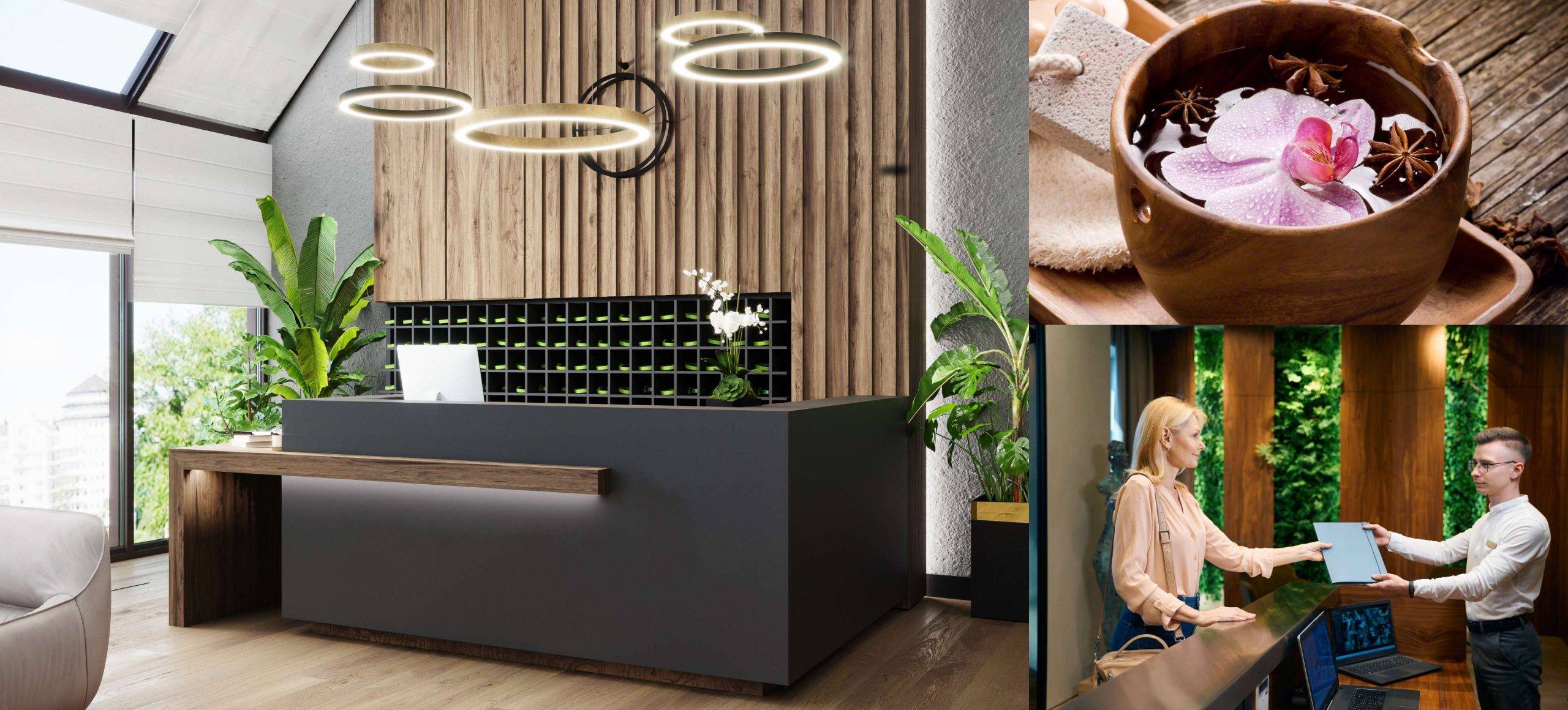
Using Wood to Create Spaces for Recuperation: Spas and Saunas
What about when wood isn’t just an accent; it’s the primary material in a restorative space?
Spas and saunas have long benefited from wood’s hypoallergenic properties. It withstands the pressures of heat and moisture naturally, making it a healthy choice for spaces like these, where skin is often in direct contact with building materials.
The stress reduction of a sauna or spa require multiple factors: high heat to increase circulation and ease achy muscles, as well as a natural environment that reduces stress. Cedar and eucalyptus wood are examples of the type of material that lends itself well to these places built for recuperation and relaxation.
Hardwoods: A Healthy Choice
Wood’s fundamental role in our well-being surrounds us. It connects us more deeply with nature, easing stress and anxiety. It supports the holistic success of those involved from the beginning, meaning this material supports people carrying on traditions in woodworking and other fields. Using hardwoods is one of the healthiest choices we can make for our minds, bodies and communities.
– Kenn Busch, Material Intelligence
Share This Post!
